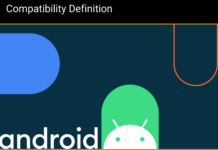Today I’ll tell you how you can change User Agent in Google Chrome, Now most of you wondering what is the user agent. Before moving on to the method, First let me tell you what is User Agent in Chrome.
Contents
What is a “User Agent”?
A User Agent is a short string that web browsers and other applications send to identify themselves to web servers. Unfortunately, most browsers falsify part of their User-Agent header in an attempt to be compatible with more web servers.
Now that you know what is user agent string, let’s start the method on how to change User Agent String in Google Chrome.
Following are some examples of User Agent String:
Android:
Mozilla/5.0 (Linux; U; Android 2.2; en-us; Nexus One Build/FRF91) AppleWebKit/533.1 (KHTML, like Gecko) Version/4.0 Mobile Safari/533.1
Chrome:
Mozilla/5.0 (Windows NT 6.3; WOW64) AppleWebKit/537.36 (KHTML, like Gecko) Chrome/33.0.1750.117 Safari/537.36
How To Change User Agent in Google Chrome:
Option 1 – Install User-Agent Switcher
- Open this link ( User-Agent Switcher at the Chrome Web Store ) and click on “Add to Chrome” button.
- Now open a new tab in chrome and right click on the blank area, then choose “User-Agent Switcher“.
- Choose the desired user agent.
Option 2 – From Developer Tools
Now before we move on, let me tell you that this method is a bit complex, but i find this one more effective.
- First, Select the “Menu”>“Tools” > “Developer tools“ or [ Ctrl + Shift + I ] . Mac users can use Command + Option + I.
- Now select the “Show console” icon.
- In next windows select the “Emulation“tab.
- Maybe by default “Emulation is currently disabled, you can enable it by clicking on phone icon next to the word “Toggle“.
- Now you’ll be in the developer console, Select “Network” on the left panel.
- In there you can easily set the “Spoof user agent” box to the User Agent you wish to use.
This is all, now you know how you can change the user agent string in Google chrome and other browsers.













